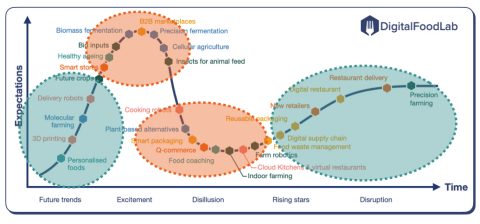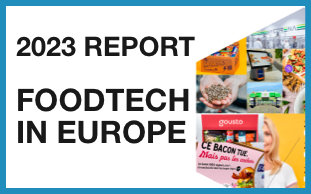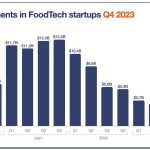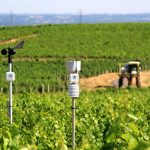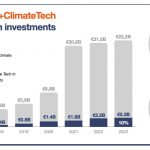We are currently at an inflexion point. This is both exciting and a bit discouraging:
- Demoralising because many of the trends and startups we wanted to see move forward are either stagnating or simply going bankrupt.
- Exciting because disruptive technologies that looked so far away are moving extremely fast and showing that what seemed very distant in the future of food may come much sooner than anticipated.
This situation is quite unique. As you can see in the graph below, FoodTech ecosystems and trends (see the full report here) can be mapped in an innovation curve where trends appear on the left, become hype, and often go through a disillusion phase to finally re-emerge and become adopted by most players.
Compared to previous years, in 2024, we have a very specific situation that creates the tension I mentioned above.
On this graph, we represent the six mega trends shaping the future of food, each composed of different trends.
Usually, an innovation curve is somehow unbalanced, with many emerging techs (on the left part of the graph), a limited number of hype ecosystems, very few in disillusion, and even fewer rising again.
But today, we have this relatively uncommon situation where:
1 – We have unprecedented trends in the disillusion stage. In all these categories, you can identify the startups that have gone bankrupt (or are on the verge of shutting down) in the past year. Some of these ecosystems will re-emerge, cleaned of all the bad players, and new startups will reappear with better products. This has been the case for farm robotics and, in a less visible way, for indoor farming.
2 – Meanwhile, we also have many trends at the top of the hype curve. As you can see on the graph, these are mostly made of alternative proteins but also decarbonisation-related ecosystems. Some of them are already sliding toward disillusion). For example, the once beloved cellular agriculture and precision fermentation startups face challenges raising money and attracting positive press.
Some of these “hype” ecosystems will undoubtedly remain at the top for some time, but we expect most of them to experience a phase of disillusionment. The year ahead will be rough for most.
3 – What’s worrying is the limited number of emerging trends. Even more concerning is that the startups there currently receive limited funding from investors. We can’t expect them to move forward during the year. In a word, and that’s something that I hear a lot from investors, it’s hard to get excited by emerging startups currently. At a pitching event recently, all the projects looked like startups that the jury had already met two or three years ago.
4 – Some trends are reaching maturity (which we define as being adopted by 30% of the market and becoming profitable). This is a good sign and proof that the food tech movement can deliver meaningful business opportunities.
So, is it the end for food startups? Actually, no, I think that what we call the revolution toward an era of “digital food” is underway and that the core trends that will shape it are now quite visible. Most have already emerged and will have a noticeable impact in the next 2 to 10 years.
If you are interested in learning more about these trends, you can either download the full report or call us to do as many industry leaders and plan a workshop where we will present these trends and discuss the opportunities they create for your business.

